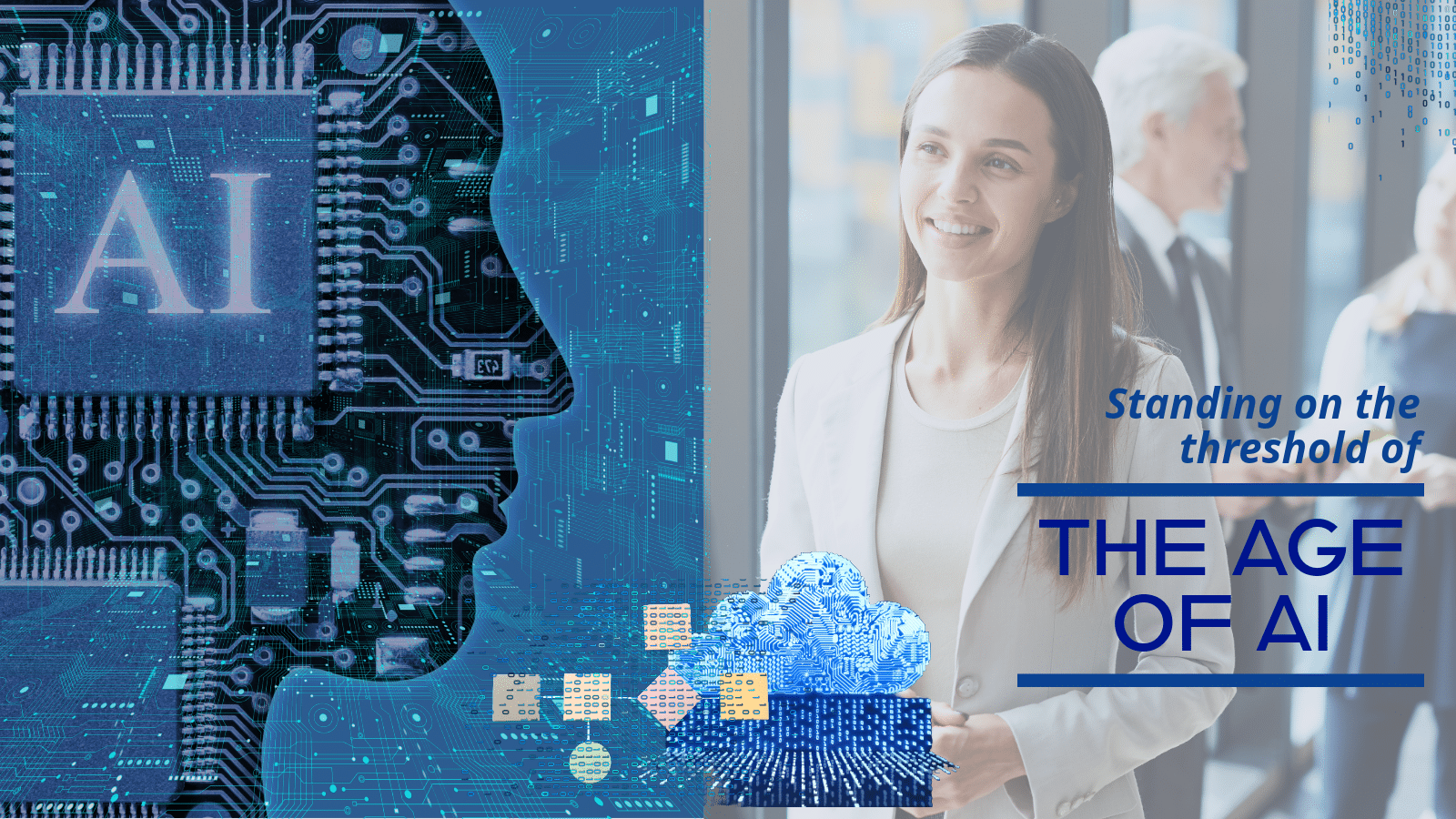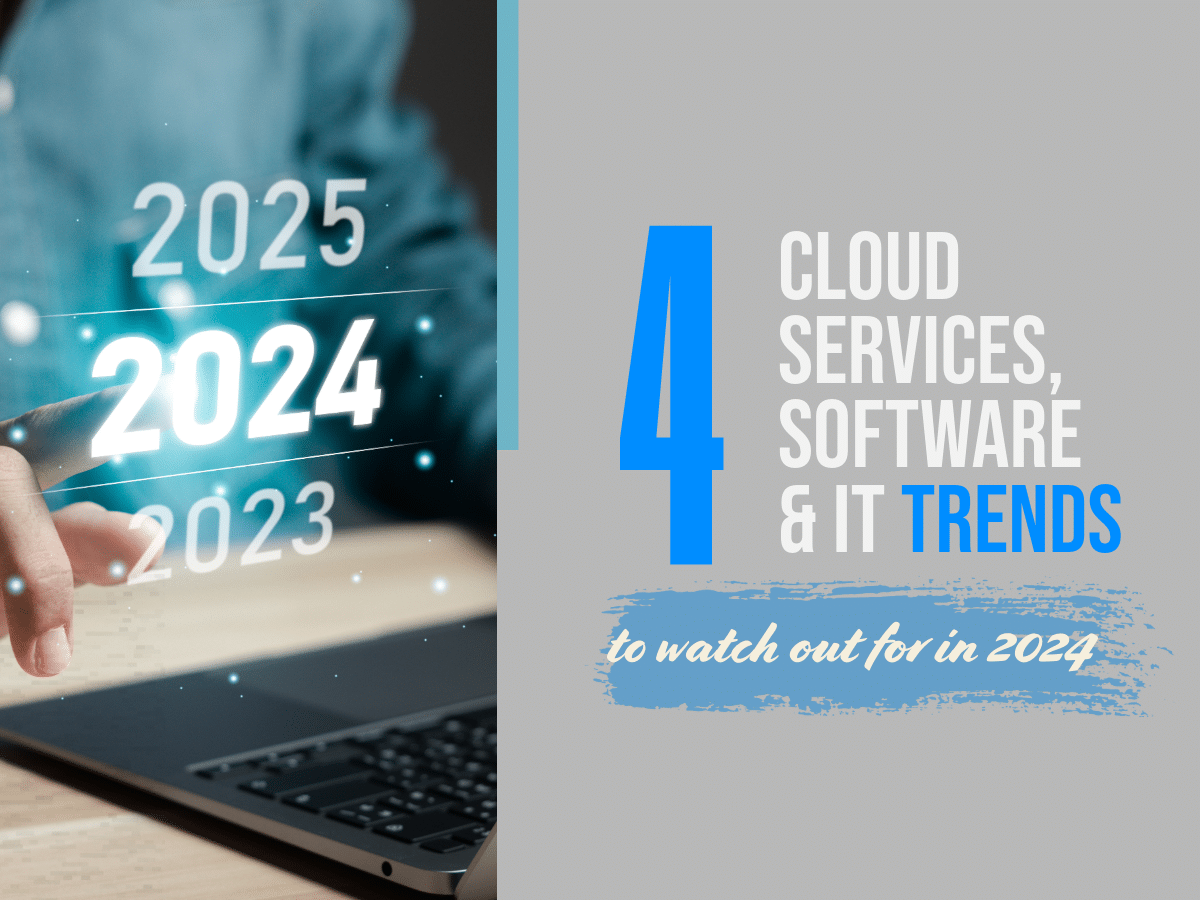
According to recent data, worldwide spending on digital transformation is predicted to reach $3.9 trillion by 2027, more than double its 2022 levels. Businesses are adopting cutting-edge tools at record speed, capitalizing on cloud technology, advanced data analytics, artificial intelligence (AI), automation, and social commerce to increase revenue. On the other hand, achieving this transformation requires increased investment in cybersecurity and the implementation of robust data governance frameworks. These measures will ensure that data remains protected while AI-driven results maintain their accuracy.
At FCX, we’ve analyzed the most impactful IT trends shaping 2025 to help you craft a strategic roadmap for your business. These trends cover everything from cloud advancements to cybersecurity priorities, digital consumer behavior, and how IT planning is evolving with support from managed IT organizations like value-added resellers, managed service providers and cloud consultants.
THE TOP IT TRENDS WE’RE WATCHING
1. Accelerated Digital Transformation 
Businesses continue to increase investments in digitization, not just as a necessity but as a strategy for long-term resilience and growth. By integrating technology into every business function, companies enhance agility, improve customer experience, reduce costs, and unlock new revenue streams.
AI is playing a major role in this transition, with advanced tools such as Retrieval-Augmented Generation (RAG) refining generative AI for real-world applications. Organizations are redesigning business operations to align with customer-focused strategies and benefit from AI-driven proactive system monitoring and automated troubleshooting.
Key Focus Areas for Businesses in 2025:
- Prioritizing Overall IT Stack Strategy for long-term alignment.
- Utilizing intelligent process automation (IPA) for repetitive tasks.
- Building customer-driven operations with AI-powered tools like advanced analytics.
2. Cloud Evolution and Hybrid Cloud Dominance 
Cloud computing was gaining traction well before 2020, but the pandemic accelerated its adoption by supporting remote work capabilities. In a 2022 Forbes article, Microsoft CEO Satya Nadella confirmed this by stating that the company “had seen two years of digital transformation in two months as its customers started adopting cloud solutions. “ And after the pandemic subsided, hybrid work became the norm for workers who have the option to do so: as of May 2024, 53% of U.S. remote-capable employees work in a hybrid model.
A such, the cloud has transformed from a simple data storage solution into a dynamic ecosystem for computing, collaboration, and innovation. Hybrid cloud setups, blending public and private environments, allow businesses to enjoy the best of both worlds. Additionally, edge-to-cloud integration is enabling seamless data processing, leveraging edge devices for real-time responsiveness while using cloud platforms for complex tasks.
Innovative Technologies Driving Cloud Evolution:
- Serverless Computing to reduce infrastructure management overhead.
- AI-powered networks that self-optimize, predict issues, and adapt dynamically in real-time.
- Adoption of Zero Trust Security Architectures to secure cloud interactions.
The cloud of 2025 will also see increased agility, thanks to unified communications platforms like UCaaS (Unified Communications as a Service) and CCaaS (Contact Center as a Service). These platforms streamline communication by integrating tools like sentiment analysis and automated call routing, further driving customer efficiency and engagement.
Cloud-based collaboration tools like RingCentral, Dialpad, and Microsoft Teams, and virtual desktop infrastructure (VDI), will remain essential, leveraging the flexibility of hybrid cloud environments.
The rise of edge computing is another significant trend. Valued at USD 6.08 billion in 2023, the U.S. edge computing market is projected to grow at a compound annual growth rate (CAGR) of 31.2% between 2024 and 2030. In edge computing, data processing is happening closer to where the data is generated, at the “edge” of a network, rather than being sent to a central cloud server, which allows for faster response times, reduced latency, and more efficient data analysis. And that is happening is that edge and cloud computing operations are merging. For example, self-driving vehicles are make quick decisions using edge computing while learning from cloud AI. This combination will power smarter and more adaptive tech, such as is happening in smart manufacturing. Sensors on factory equipment can collect data at the edge, allowing for immediate machine maintenance alerts. This happens while the cloud is used to analyze trends and optimize production processes over time resulting in a more complete ecosystem. This the trend of edge computing is further supported by increased 5G availability, making more flexible deployment possible. Besides this edge computing can also be combined with the IoT. Because of this IoT functionality and performance is improved with low latency and high throughput data. This creates opportunity for new use cases and new solutions.
 3. Artificial Intelligence Revolution Continues
3. Artificial Intelligence Revolution Continues
AI’s role in enterprise operations is steadily expanding, transforming industries with tools capable of delivering real-time insights, automating workflows, and generating actionable predictions. A way marketers will be leveraging AI in 2025 for example is to enrich and analyze their data. AI powered tools can assist with repeat purchase decisions, support reduction of attrition and identify the most loyal customers.
Technologies like RAG, Retrieval Augmented Generation, an AI framework that combines LLMs with traditional information retrieval systems, will refine AI output for practical industries, making AI adoption a competitive advantage. For example,
In 2025 it will therefore be logical that many organizations will be introducing comprehensive AI governance guidelines. These guidelines will aim to ensure the responsible use of AI, mitigate risks associated with shadow AI, and address data privacy and security concerns. As part of this process and further implementation of AI, many businesses will form AI councils or hire Chief AI Officers to lead AI transformation.
2025 is expected to be a pivotal year for the development of Artificial Intelligence. A key trend to observe is the rise of Agentic AI, also know as Autonomous AI—systems capable of independently learning, generating, and taking action. This advancement holds immense potential to revolutionize operations in customer support, IT, and sales by enabling smarter, more autonomous processes. Agentic AI can help companies optimize their supply chains by managing inventory, predicting demand, and adjusting delivery routes in real-time for example, and can help retailers manage product placement, create custom promotional displays, and maximize shelf space.
Although adoption of AI is rapidly growing, its effects may vary widely. Organizations that establish clear success metrics—such as increased productivity and cost reduction—will likely feel more confident in scaling their AI initiatives. That said, businesses must proceed with caution. Challenges such as premature failures, machine learning bias, lack of human oversight and overstating AI capabilities can hinder trust and even cause derailment. Businesses theretofore address the ethical implications of AI adoption, ensuring inclusivity, fairness, safety and transparency in its implementation.
As AI agents gain traction in corporate environments, they will play a significant role in managing complex workflows, automating business processes, and supporting employees. Technologies like Robotic Process Automation (RPA) will continue to expand their influence. RPA is designed to handle routine tasks traditionally performed by humans, such as data extraction, form completion, and file transfers. Additionally, RPA tools can streamline operations like automating order processing and shipping notifications, transferring data between systems, and reconciling discrepancies. Furthermore, RPA bots are capable of pulling data from multiple systems, matching transactions, and highlighting exceptions—making them an indispensable asset in enhancing efficiency and reducing manual effort.
Key Applications of AI in 2025:
- AI-driven Security Orchestration, Automation, and Response (SOAR) platforms improve cybersecurity with real-time autonomous responses.
- Enhanced customer experience via AI-powered omni-channel interactions, covering voice, chat, email, and social.
- Fraud detection in e-commerce and finance.
4. Increased Focus on Cyber Security 
Sophisticated threats like ransomware and breaches targeting non-human identities (e.g., APIs, tokens) require modern, proactive solutions such as:
- Zero Trust Architectures, where every access request is verified.
- Enhanced training for a human workforce alongside AI-driven cybersecurity solutions.
- AI-powered networks that self-adjust during an attack to minimize damage.
In 2025, cyber criminals will leverage deepfake technology to execute more sophisticated phishing and social engineering campaigns. This AI driven technology can enable threat actors to create convincing audio, video, or synthetic personas that manipulate and deceive even the most vigilant employees. Additionally, many attacks will now be automated, leading to an increase in phishing attempts and Distributed Denial of Service (DDoS) attacks targeting cloud systems. Ransomware attacks will also continue to be widespread. All of this will put additional pressure on the IT and cloud security team to deploy new defenses and neutralize threats.
To combat this, security teams will heavily utilize AI to identify and respond to cloud-based threats automatically, reducing manual intervention and improving response time. AI will also analyze complex threat patterns and attribute attacks to specific actors, enabling more precise and targeted mitigation strategies. We will see an increase in advanced AI-based defense systems capable of detecting abnormal behavior. These systems will allow for a faster response than traditional methods.
In addition, as organizations will continue to adopt hybrid cloud environments, security solutions will need to effectively manage security across multiple cloud providers, resulting in multi-cloud security management.
As a result, the complexity of cloud infrastructures and the increase of attacks will ensure that Cyber Resilience Planning and Cyber Resilience Frameworks will gain traction. Cyber resilience refers to an organization’s ability to anticipate, withstand, recover from, and adapt to cyberattacks or disruptions. It ensures the continuity of critical business functions during a cybersecurity incident and allows for a rapid resumption of operations following an attack; essentially, it’s about not just protecting systems but also being able to bounce back from cyber threats effectively.
Businesses teams will work hand in hand with their managed IT services providers to ensure critical data can be safeguarded. Disaster recovery planning and backup services will remain important as they ensure businesses can continue operations during and after an unforeseen event. By securing cloud-based backup solutions, MSPs ensure critical data is easily retrievable in a hardware failure, cyberattack, or natural disaster.
Compliance is also becoming a critical factor. Stricter regulations around data privacy and evolving data governance frameworks will require businesses to consistently assess vulnerabilities, focus on multi-factor authentication, implement intelligent firewalls, and develop Cyber Security Frameworks that include robust backup and recovery strategies. Organizations will place greater emphasis on securing the entire cloud ecosystem, including third-party vendors and software components, to minimize vulnerabilities within the cloud environment.
5. Consumer-Centric Tech Adoption 
With over 97% of the US population connected to the internet, consumer expectations are driving the rapid technological transformation. Additionally, the US is one of the world’s largest online markets, with 91% of the population owning smartphones
This highlights the growing consumer demand for speed, personalization, and convenience, which drives businesses to adopt technology-enabled personalization strategies. PWC reports that nearly 80% of consumers value these attributes in customer experiences. Because of this, AI algorithms analyzing consumer data to suggest products and services tailored to individual preferences will become more popular. One-click check-out and a simplified purchase process with stored payment information and quick checkout options will support demand. The ability to research and choose eco-friendly products is also on the rise. And last, direct sales on social media will most likely see a significantly increase. Consumers enjoy browsing and purchasing products directly through shoppable posts. We are witnessing a shift where social media provides a readily available marketplace to connect sellers directly with potential buyers.
Key Innovations for Empowered Consumers:
- AI-powered chatbots and analytics tools to deliver hyper-personalized offerings.
- Fully omni-channel customer experiences leveraging platforms like CCaaS to align communication across voice, email, chat, and social media.
- Start of the immersive e-commerce experiences with AR/VR to preview products.
Investing in tools that provide accurate and personalized insights ensures businesses stay competitive amid these growing demands.
Bridging The IT Skills Gap
The demand for expertise in cybersecurity, artificial intelligence, data analysis, and cloud computing far exceeds supply. The shortage of skilled IT professionals remains a significant challenge for businesses in 2025. To address this issue, IT leaders must focus on narrowing the skills gap through upskilling and reskilling programs, while fostering a culture of lifelong learning. Additionally, they should lead the adoption of self-service, low-code, and no-code tools, enabling team members with less technical experience to contribute to digital transformation initiatives.
Because of this shortage, Managed Security Service Providers (MSSPs) and Managed Service Providers (MSPs) will increasingly rely on hyper-automation to complete tasks efficiently. Hyper-automation transforms traditional automation by integrating advanced technologies like artificial intelligence (AI), machine learning (ML), and robotic process automation (RPA). These innovations create IT systems capable of operating autonomously with minimal human involvement.
Within these self-optimizing systems, the cutting-edge feature of self-healing technology will gain prominence. This technology allows IT systems to identify, diagnose, and resolve issues automatically, often before users even notice a disruption. The result is minimized downtime and consistent service delivery. For MSPs, this means reduced resources dedicated to routine maintenance and troubleshooting, enabling technical teams to focus on complex, high-priority initiatives.
Over time, these systems will evolve to predict potential failures, allocate resources more efficiently, and prevent outages altogether. By adopting hyper-automation and self-healing systems, MSPs will gain the ability to provide seamless service delivery that meets the growing demands of today’s digital economy.




 3. Artificial Intelligence Revolution Continues
3. Artificial Intelligence Revolution Continues 




 A way to secure, connect and protect your business
A way to secure, connect and protect your business Enter the Cloud. Cloud-based services encompassing Managed IT, Cyber Security, Back Up & Disaster Recovery and Unified Communications and Collaboration offer unparalleled protection and performance for businesses.
Here are the inherent advantages/benefits provided by Cloud based Managed Service Providers (MSPs) and Managed Security Service Providers (MSSPs):
Enter the Cloud. Cloud-based services encompassing Managed IT, Cyber Security, Back Up & Disaster Recovery and Unified Communications and Collaboration offer unparalleled protection and performance for businesses.
Here are the inherent advantages/benefits provided by Cloud based Managed Service Providers (MSPs) and Managed Security Service Providers (MSSPs):
 The Security Aspect
The Security Aspect

 Slightly amended copy of original LinkedIn article posted on 01/11/2024 – By Iris Lentjes
Slightly amended copy of original LinkedIn article posted on 01/11/2024 – By Iris Lentjes
 January 3rd, 2024 – By Iris Lentjes
January 3rd, 2024 – By Iris Lentjes


 How to protect your business?
How to protect your business?

 C
C

 HOW DO CLOUD CONSULTANTS GET PAID?
HOW DO CLOUD CONSULTANTS GET PAID? 


 88% of companies now consider cybersecurity a business risk. The time may come when the executives of a firm want to draw up their battle plans. They might have heard of a competitor who got affected and lost significant revenue. They might have seen or read a story in the news which raised an alarm, as so many stories around cyber attacks do these days. The time for action is now.
88% of companies now consider cybersecurity a business risk. The time may come when the executives of a firm want to draw up their battle plans. They might have heard of a competitor who got affected and lost significant revenue. They might have seen or read a story in the news which raised an alarm, as so many stories around cyber attacks do these days. The time for action is now.






 No fortress will hold if the foundations which must support the walls are built on shaky ground. At a minimum businesses need to implement the following:
No fortress will hold if the foundations which must support the walls are built on shaky ground. At a minimum businesses need to implement the following:
 Think you’ve been involved in a data breach?
Think you’ve been involved in a data breach?  THE IMPACT OF A BREACH
THE IMPACT OF A BREACH



